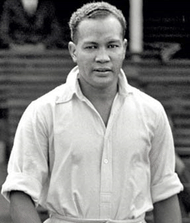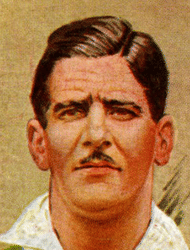The Chinese calligraphy is one of the most revered art forms in the East Asian cultural sphere, though it is scarcely understood by many artists around the world. The unique art form enunciates life experiences through traces of ink on a silk or paper that is registered with flawless time and rhythm by ingenious artists. Today, the art has only few takers and seems to be treading into oblivion.
Chinaman bowling, in many respects, is analogous to Chinese Calligraphy, as both the art forms are eccentric and idiosyncratic in their own ways. The aforementioned art forms possess a noteworthy charm that can only be fathomed by its cultured practitioners. Fortitude and forbearance are the watchwords for those who endeavour to master these arts. The subtle art of chinaman bowling does not get the recognition which it richly deserves, and its artists are seldom held in high regard unlike cricket’s showmen who hog all the limelight today.
Though the name suggests so, it’s still a lesser known fact that the term originates from a player of Chinese origin. In the summer of 1933, the West Indians toured England, and, in a Test match at Old Trafford, Ellis Achong – a left-arm orthodox spinner of Chinese origin – representing West Indies bamboozled Walter Robins, who was stumped by one of Achong’s variations.
It is reputed that a frustrated Robins is supposed to have uttered these words to the umpire Joe Hardstaff Sr, “fancy being done by a bloody chinaman”. Subsequently, Learie Constantine re-joined by saying, “Do you mean the bowler or the ball?”
As a result, a left-arm unorthodox spinner (one who uses his wrist to turn the ball from the off side to the leg side for a right-handed batsman) is referred to as a chinaman bowler.
Cricket was not like the speed driven generation’s game like it is today in the early years of 1900; it was an era when people played timeless Test matches. Though the art of Chinaman bowling is labelled after Achong, it was implanted into cricket by South Africa’s first non-white player Charlie Llewellyn. He was a pioneer who spearheaded to break the shackles in a country – that was plagued by apartheid – through his cricketing prowess.
Record books reveal that he snared 711 wickets for Hampshire through this inscrutable art. His lionhearted efforts to break the barriers of discrimination and prejudice have defined his legacy. Owing to this, the dexterity he possessed with the ball through his uncommon art (chinaman bowling) has been pushed to the backdrop.
If we flip over the pages of cricket’s rich history, we can discover that only a handful have embraced this bowling style. Man’s diffidence to traverse along uncharted territories owing to the fear of failure could have forced youngsters to shun way from this quirky art of left-arm wrist spin. Matthew McConaughey said in his acceptance speech at the Oscars that you need a person to look up to and chase in life. The dearth of venerated superstars in this niche art has also led to its decline with budding cricketers having no heroes to idolize.
Paul Adams was one of the rare breeds who made the art look comical. His distinctive action coupled with an exaggerated jump brought out a hilarious sight, which entertained cricket enthusiasts. The pugnacious Mike Gatting described Adam’s action as a ‘frog in blender’. Adam’s peculiar action kept our eyes glued to the television sets and made him stand apart from his contemporaries, even though he never enjoyed phenomenal success at the international circuit.
Brad Hogg, a modern day expert of Chinaman bowling, had impeccable control over his deliveries. He had several tricks up his sleeve and was blessed with the virtuosity to beat the crème de la crème of cricket batsmen. An outstanding wrong one and a well-disguised flipper lent him the much needed variation that is indispensable for a spinner. The swivelling action with a poked out tongue before the launch of his delivery further made life difficult for cricket’s most illustrious batsmen. At an age of 43, he is still outfoxing batsmen through his subtle variations.
Sir Garfield Sobers was the most popular among this faction, albeit his accomplishments as an all-rounder transcended his performances as a left-arm unorthodox spinner. Even though he bowled sporadically, Michael Bevan used this brand of bowling to great effect as he once single-handedly spun out the West Indies with a ten-wicket haul at Adelaide.
The art’s grandest thespian from the land of kangaroos is relatively unknown even among die-hard cricket fanatics. Chuck Fleetwood Smith was nothing but a wayward genius if there was ever one in cricket. The Ashes Series of 1937 hung on the proverbial knife’s edge: the series was in favour of England, and, by the stumps on day 5, the great Wally Hammond was still at the crease. The English lions needed about 250 runs, and, with seven wickets in hand in a timeless fixture, even the most jingoistic of Australians would have scoffed at the possibility of the Aussies winning the Test.
And the next morning Don Bradman handed the ball to Fleetwood Smith, who let the world see his eccentric genius. The man from Victoria castled the Gloucestershire maestro with a ripper. The flight drew Hammond forward as it drifted way in the air and then viciously turned in the opposite direction to disrupt the woodwork. The rest of the English batting fell for a meagre 94 runs with Smith amassing a 10-wicket haul.
The great Bradman wrote in his farewell to cricket, “If ever the result of a Test match can be said to have been decided by a single ball, this was the occasion.” After the match, a legion of fans gathered in front of the pavilion and chanted his name until he came out to greet them. Yet the man played only ten Tests for Australia. He was an outlier bereft of self-discipline: a quality that curtailed him from becoming a prolific bowler.
Who is the last chinaman bowler from India? Pose this question to even the best of cricket connoisseurs, and the reply you would get is nothing but a blank stare till the end of January this year. Now, Kuldeep Yadav is the next big sensation in the junior domestic circuit. The young lad from Kanpur announced his arrival by grabbing a hat-trick against Scotland in the ICC Under-19 cricket World Cup held in UAE this year. He is the pioneer from our country for this unaccustomed art and with arduous efforts could scale heights at the international level.
Maththew McConaughey also said in his speech at the academy awards that the hero he wanted to chase in life at fifteen was himself in ten years. All that a budding chinaman bowler needs to do is draw inspiration from McChoughey’s perception and the valour that Robert Frost had to be a trailblazer as he travelled through ‘the road not taken’, which made all the difference in him becoming a word famous poet.
Follow IPL Auction 2025 Live Updates, News & Biddings at Sportskeeda. Get the fastest updates on Mega-Auction and cricket news



